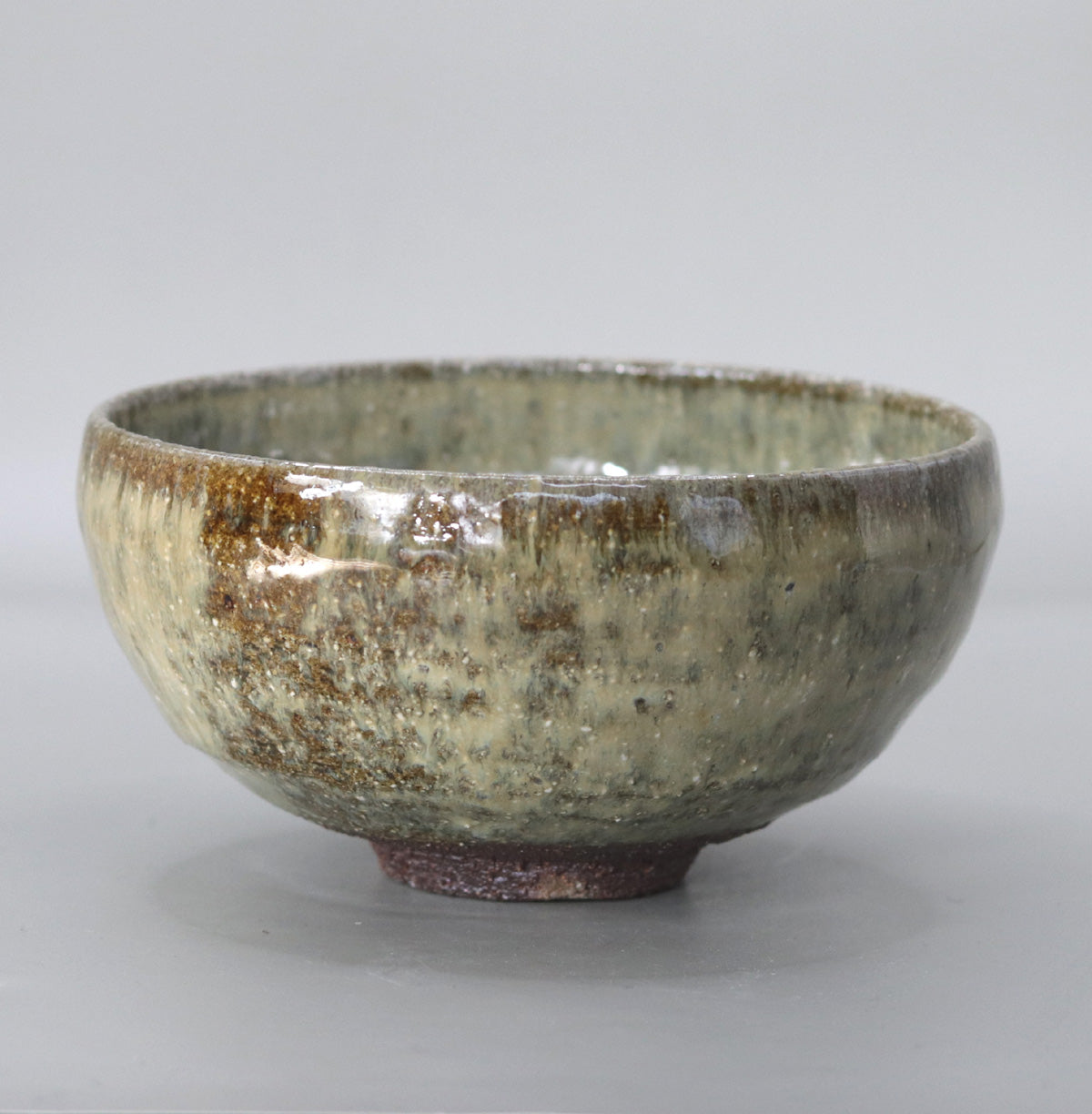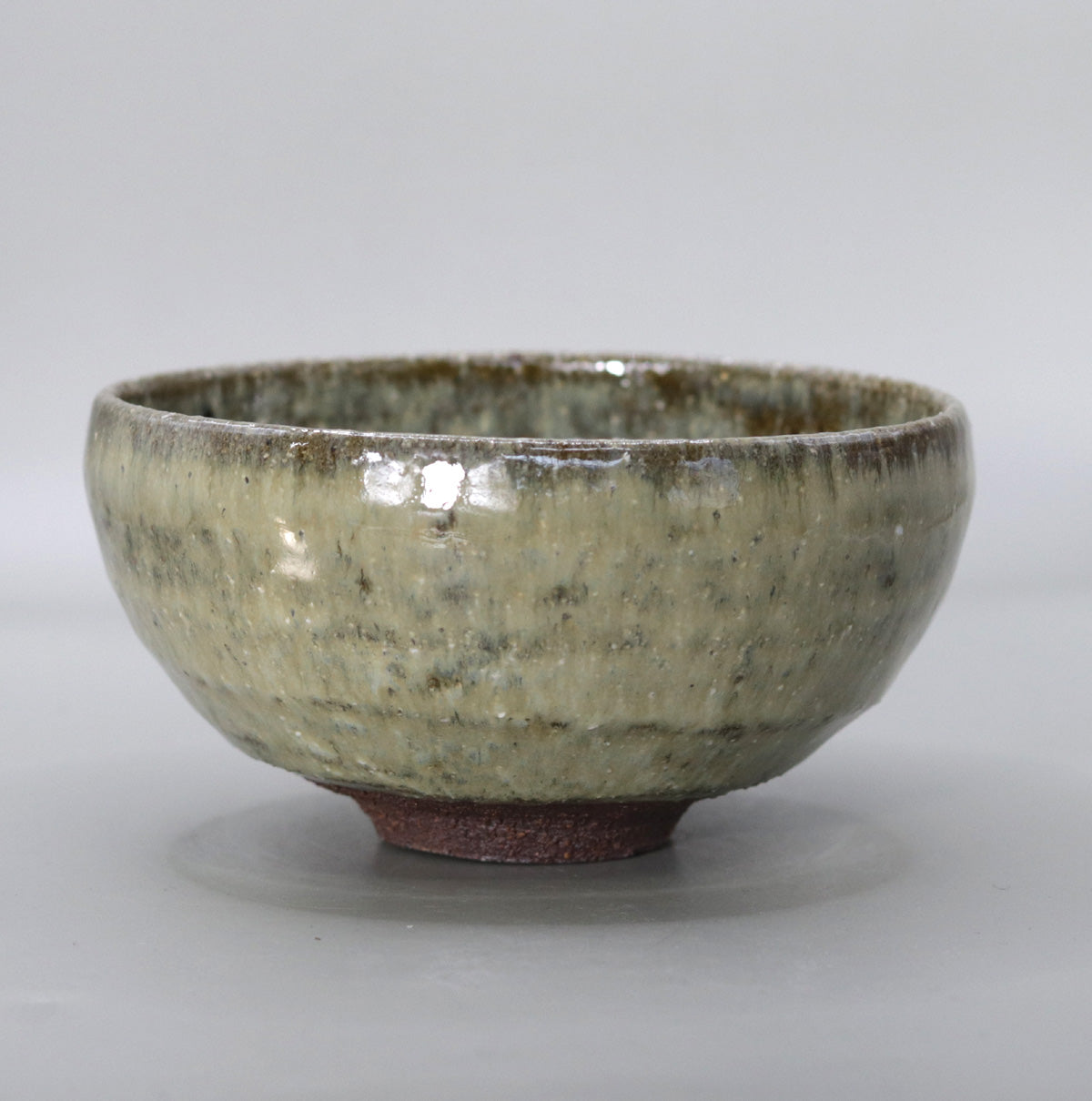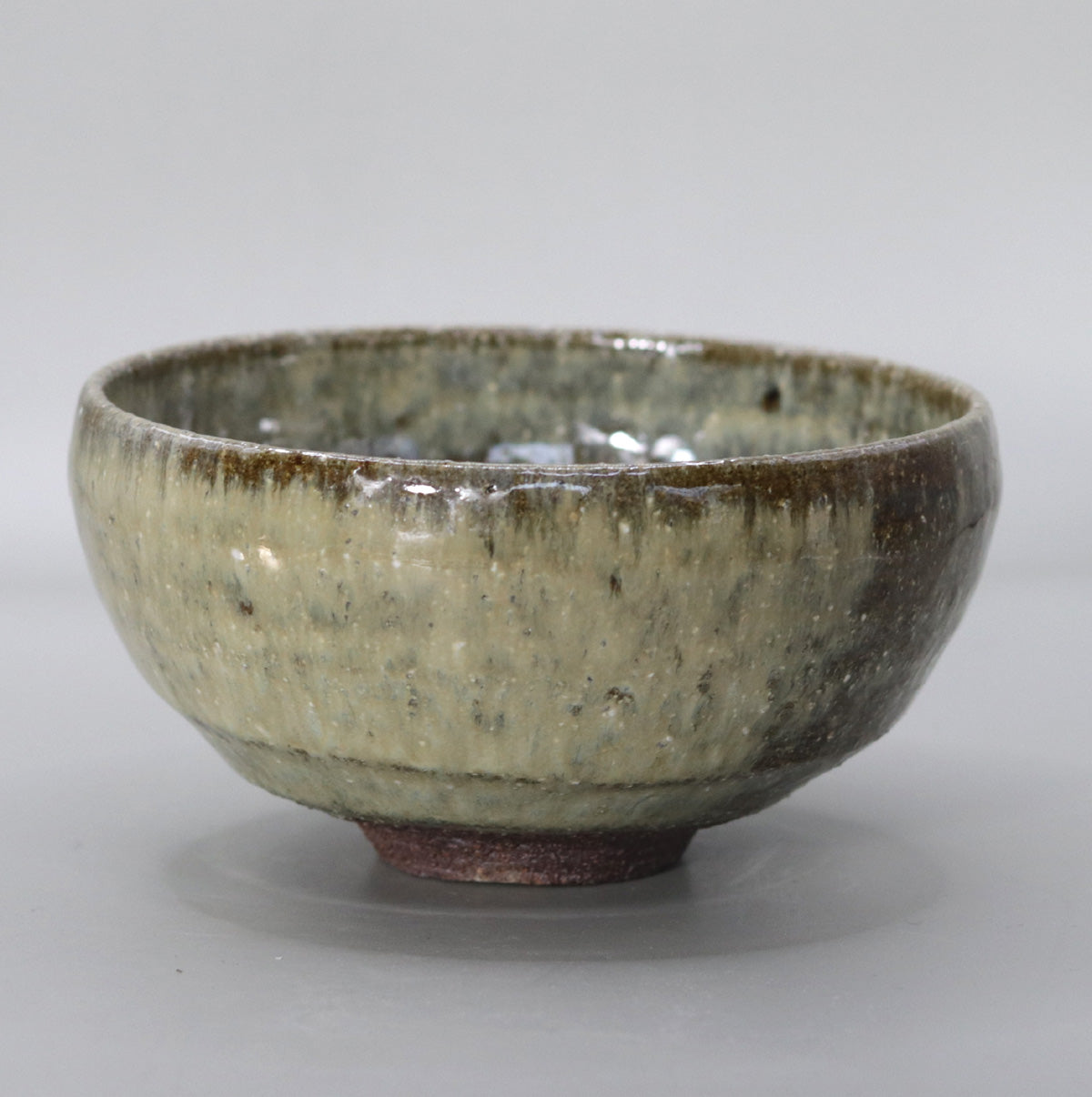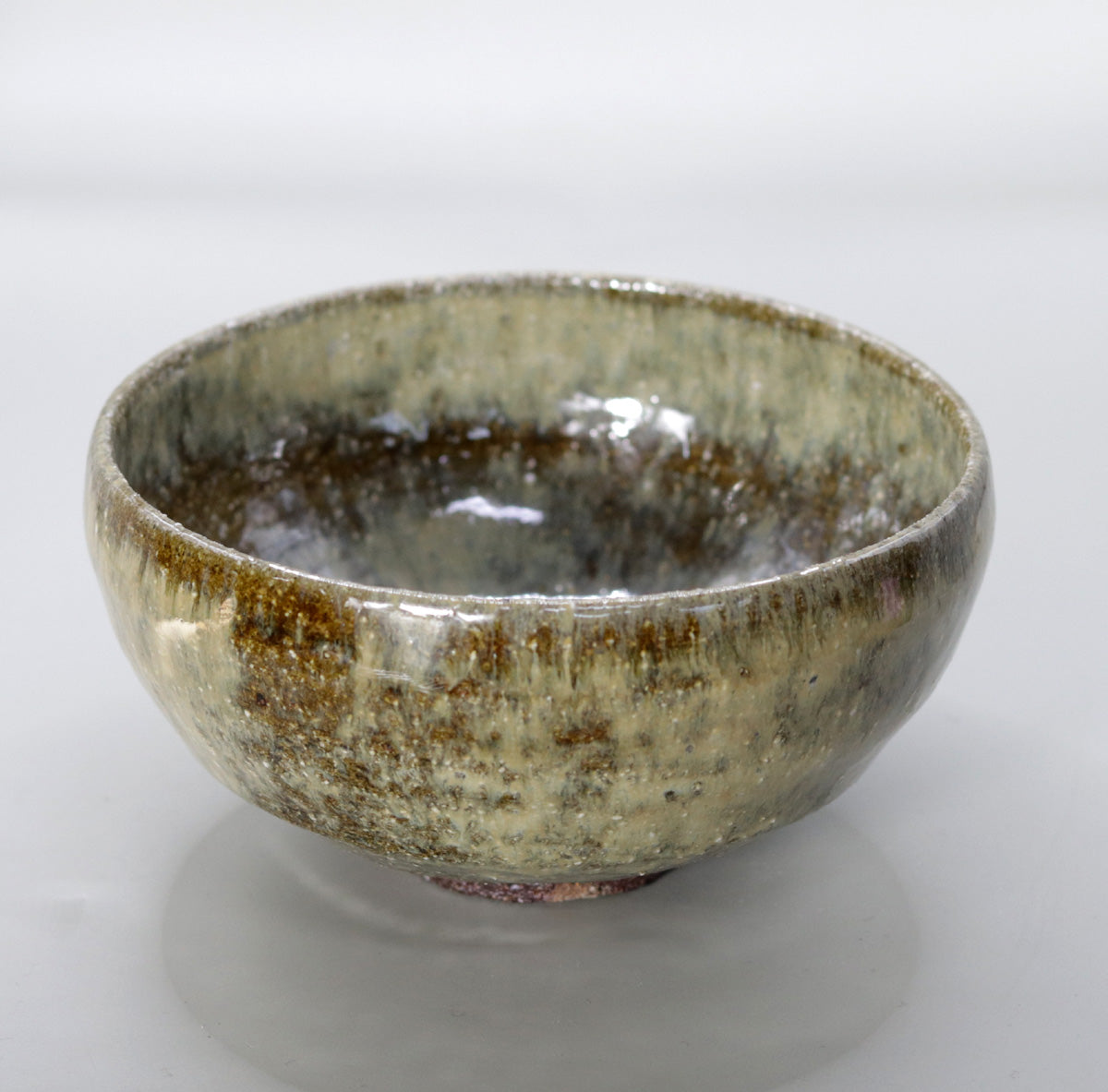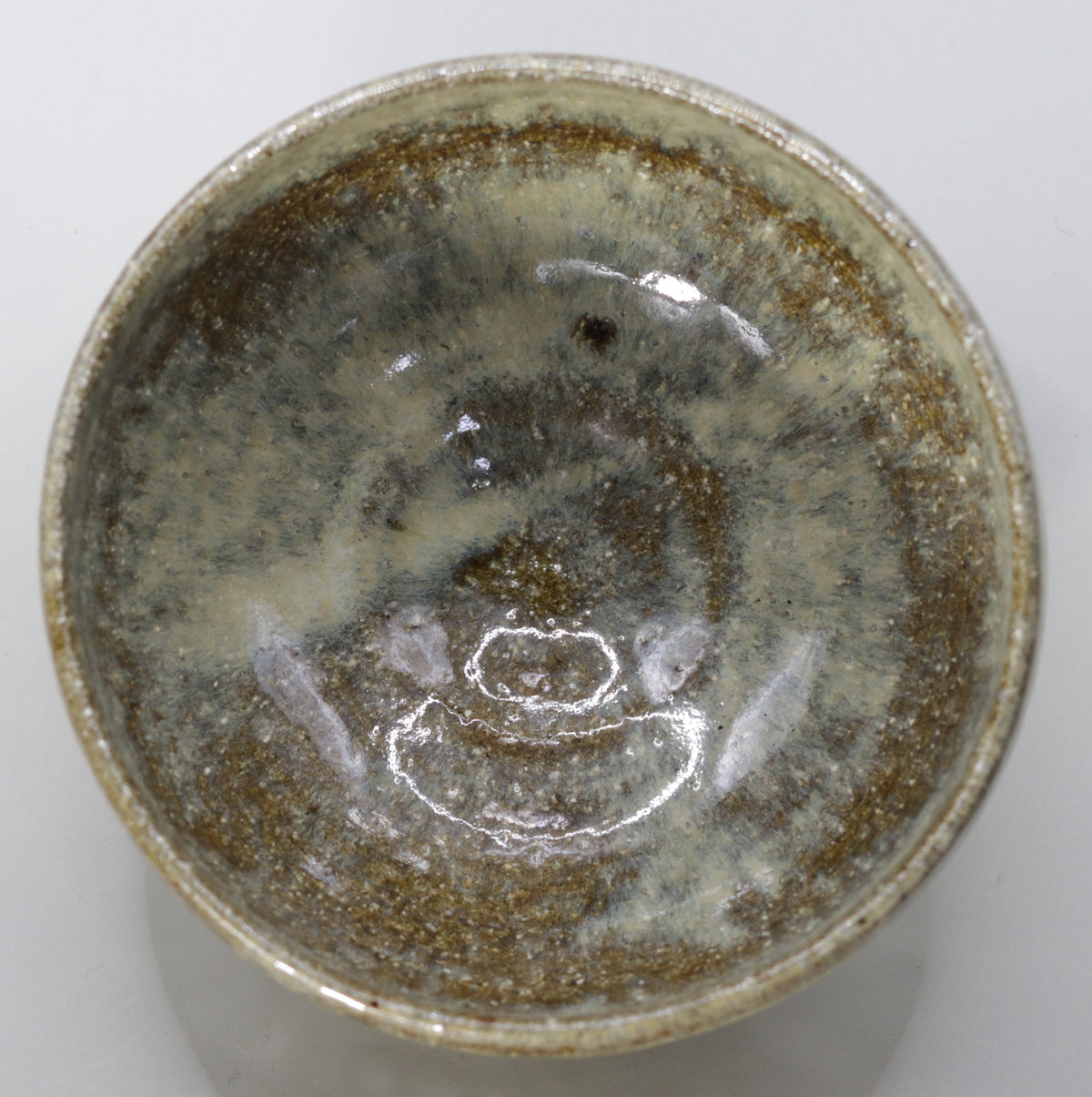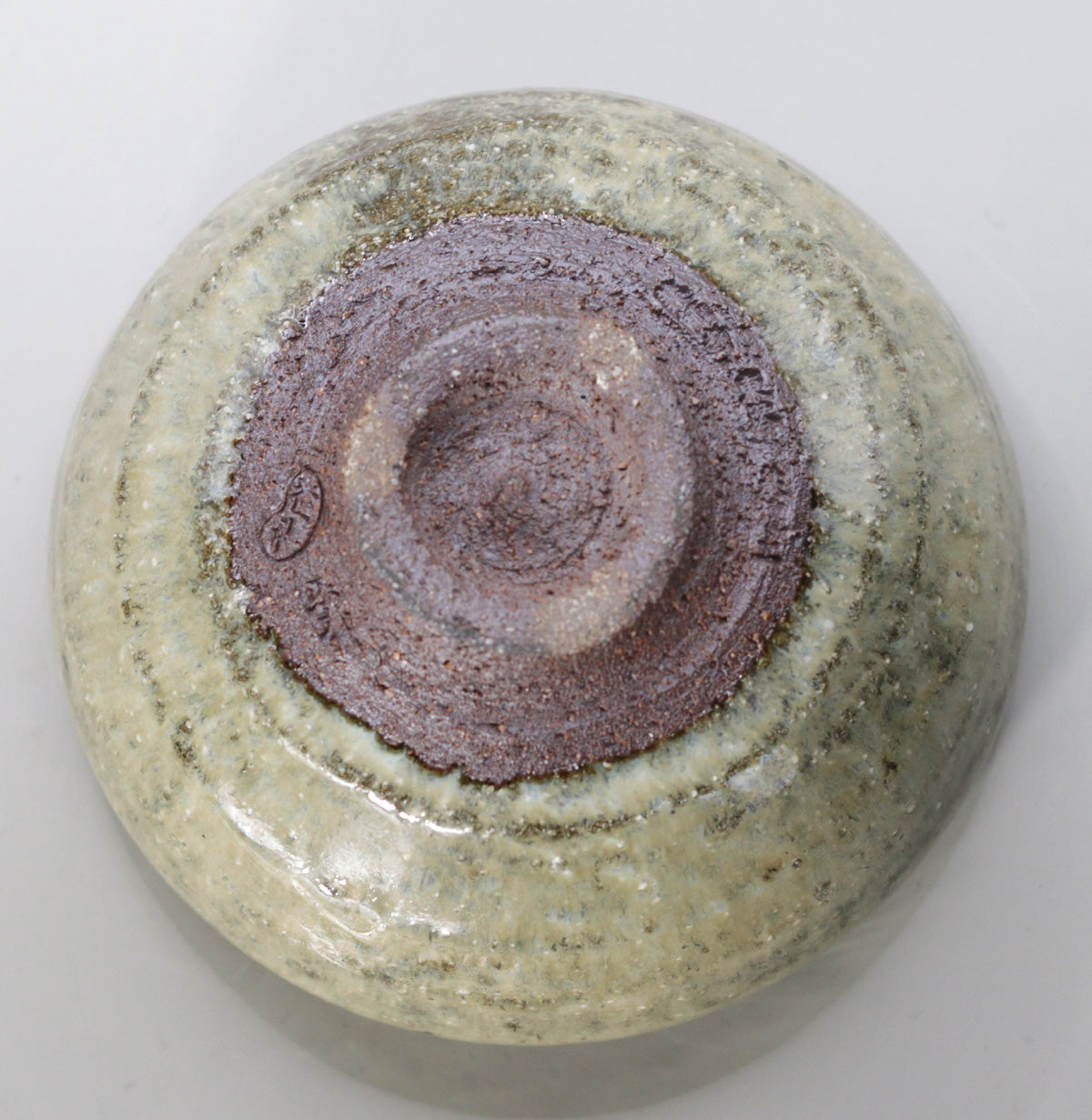Yakushiji Temple East Pagoda Foundation Clay Ash Glazed Tea Bowl by Rakusai Bisai
Yakushiji Temple East Pagoda Foundation Clay Ash Glazed Tea Bowl by Rakusai Bisai
Couldn't load pickup availability
Width: 14.1cm Height: 7.2cm
Yakushiji Temple East Pagoda Foundation Clay Ash Glazed Tea Bowl - By Rakusai Onishi
1. Clay - Foundation soil that holds the breath of 1,300 years
The clay used for this piece is "old soil" that was collected when repairing the base of the East Pagoda of Yakushiji Temple, a famous pagoda built in the Nara period. Over the years, the silica and iron in the clay have recrystallized, leaving tiny mica and quartz grains scattered throughout. Onishi Rakusai blends this old soil with rough Shigaraki clay, elevating it to a rich earthy flavor in which the quartz grains in the clay sparkle like stardust even after firing.
2. Ash glaze and kiln transformation - Moss-green scenery painted by flames
The exterior is covered with a self-adjusting ash glaze, which is mainly composed of straw ash and wood ash. By firing at a slightly reducing high temperature,
Top : The ash glaze melts into a pale grey, and silver-gray crystals emerge around the rim.
Middle : The iron in the glaze gives it a moss green color, and natural ash falls as glass droplets.
Underbelly : In areas where the flames hit hardest, the ash did not melt completely, leaving behind dark brown spots, creating a three-layer gradation that, depending on the angle from which it is viewed, is reminiscent of the rain-soaked stone surface of an old tower or the moss-covered base.
3. Shape: A neat bowl shape reminiscent of the base of an ancient pagoda
The bowl shape with a slightly curved rim seems to reflect the silhouette of the tower body spreading out towards the sky. The three wheel marks remaining on the body create a rhythm reminiscent of the layering of the foundation stones, visually capturing the flow of the ash glaze. The base is finished in a slightly cut-off shape, and the red of the fire-reflecting pattern peeks through, creating a contrast between the simple red of the clay and the tranquil blue of the ash glaze.
4. Ease of use and functional beauty - Practicality with a touch of wabi
The roughness of the outer surface, derived from the silica sand, provides a comfortable friction to the palm, and inside, a thick layer of ash glaze has accumulated, forming a milky white layer of glass. When matcha is poured into the glass, the green color melts into the milky surface like mist, and the bubbles are fine and stable. The exposed part of the base near the base allows heat to escape moderately, so the temperature is adjusted to be comfortable to hold even in winter.
5. Cultural significance: A bowl of tea that conveys prayer and rebirth
The East Pagoda of Yakushiji Temple is known as "Frozen Music" and has protected the flame of the law for 1,300 years through repeated reconstruction and repair. Using the foundation soil is an act of sealing the history of eternal prayer and rebirth in the tea bowl. At a tea ceremony using this piece, the moment when you sip the matcha becomes a "crossroads of time" that connects the past and the present, and guests can savor the cup with a feeling of quietly joining their hands together.
Summary
Made from 100% clay from within the grounds of Yakushiji Temple, this piece is characterised by its clear beauty, with all impurities thoroughly removed. The clay has been around for ages and is homogeneous, and when fired it takes on a clear luster, and when fired it takes on a gentle colour like old roofing tiles. Its smooth texture and resistance to warping are also appealing. The story of the clay, which holds 1,300 years of history, gives you a sense of peace every time you pick it up. This is a special piece that combines material, beauty and spirituality.
The moss-green ash glaze reflects the ancient pagoda after the rain, and the stardust-like quartz grains hidden in the clay are reminiscent of the night sky - Onishi Rakusai's "Yakushiji East Pagoda Foundation Clay Ash Glazed Tea Bowl" is a gem of a bowl that holds in the palm of your hand the natural symphony of earth, ash, and fire, and the prayers of a thousand years. If you place it at a tea ceremony, the green of the matcha will gently sway on the lake surface, and your guests will be enveloped in the lingering echoes of prayers that transcend time and space.
A conversation with Rakusai Onishi – High-end pottery specialty store [Amagi-do]
Share
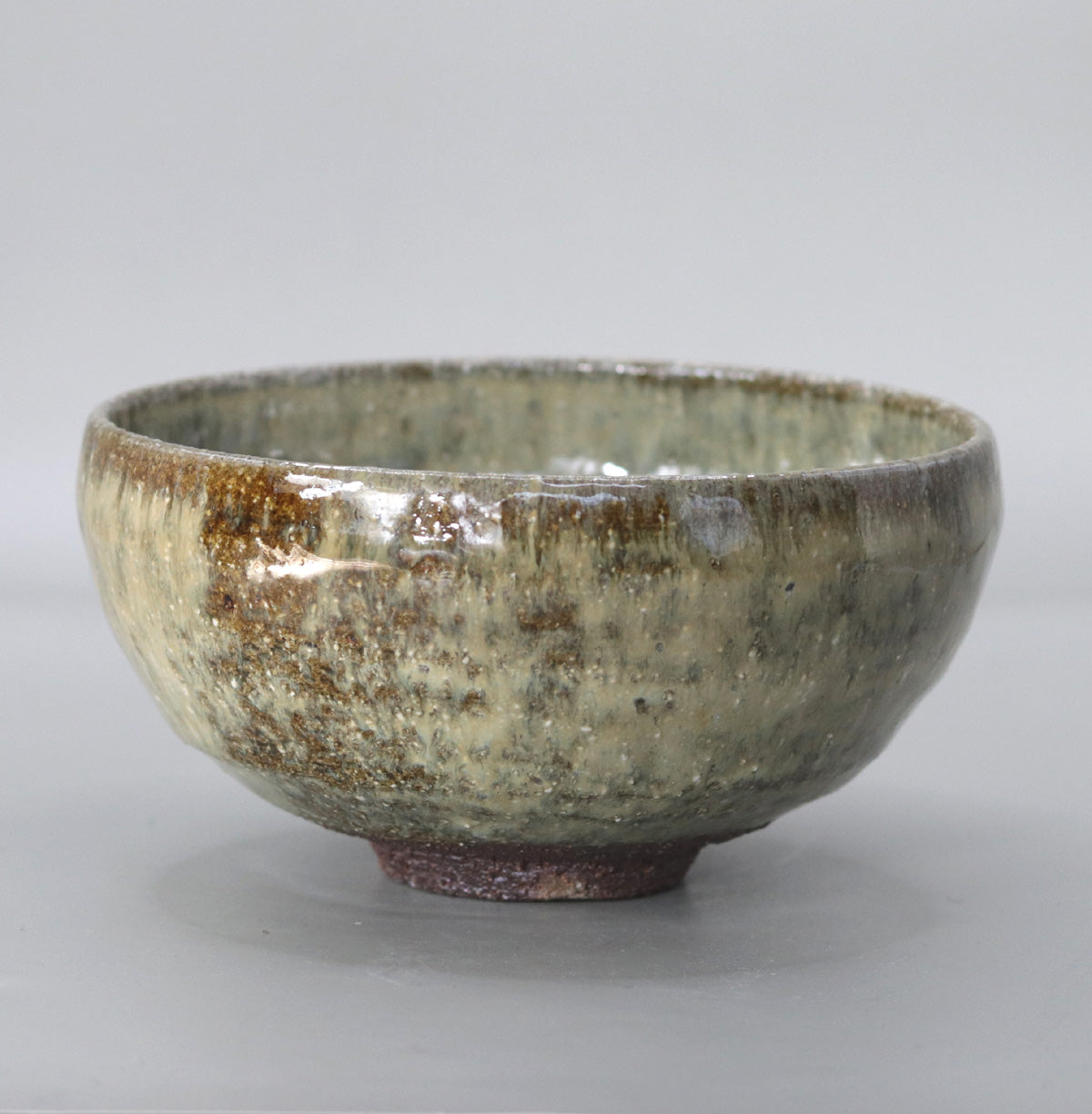

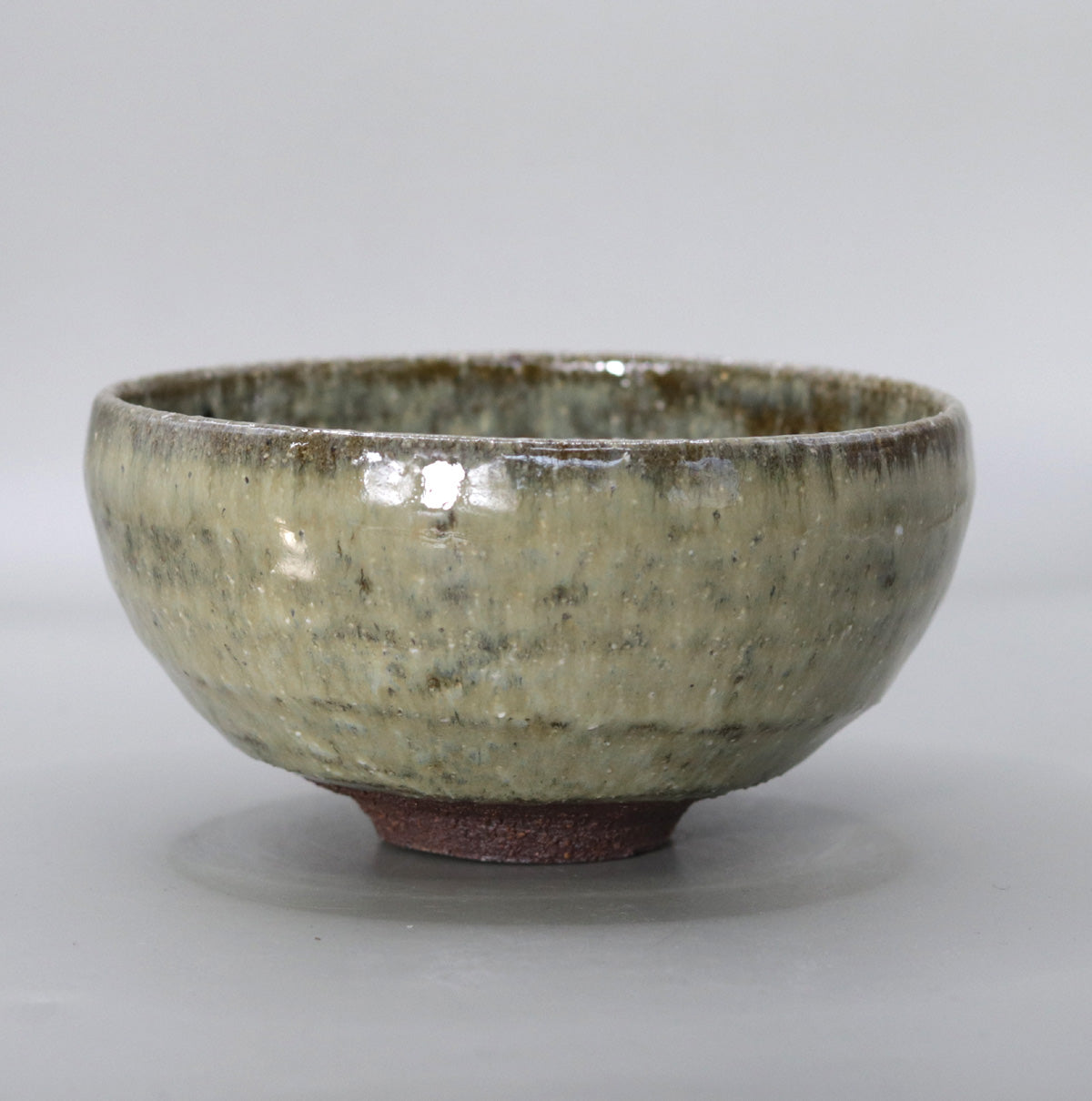

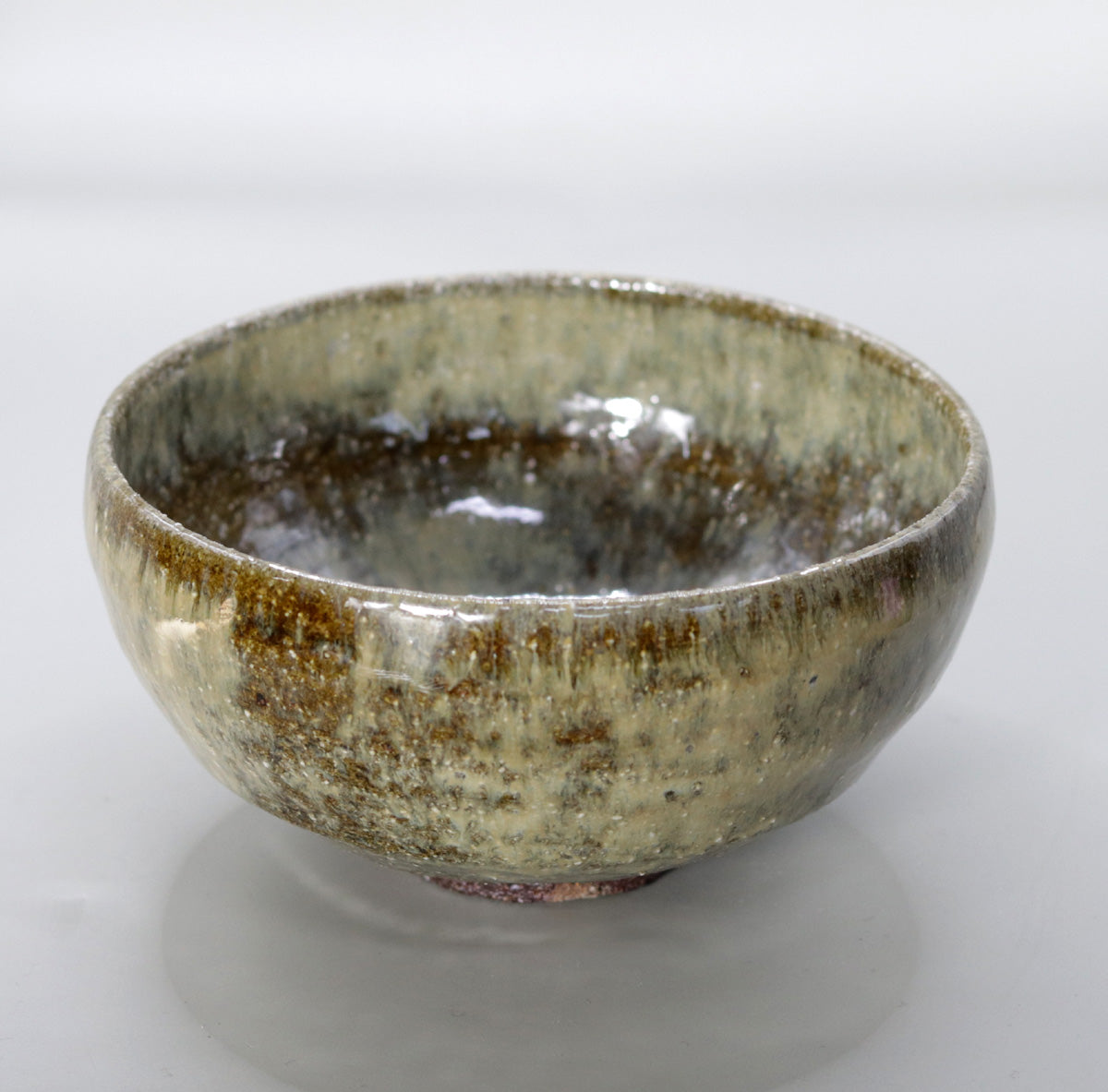


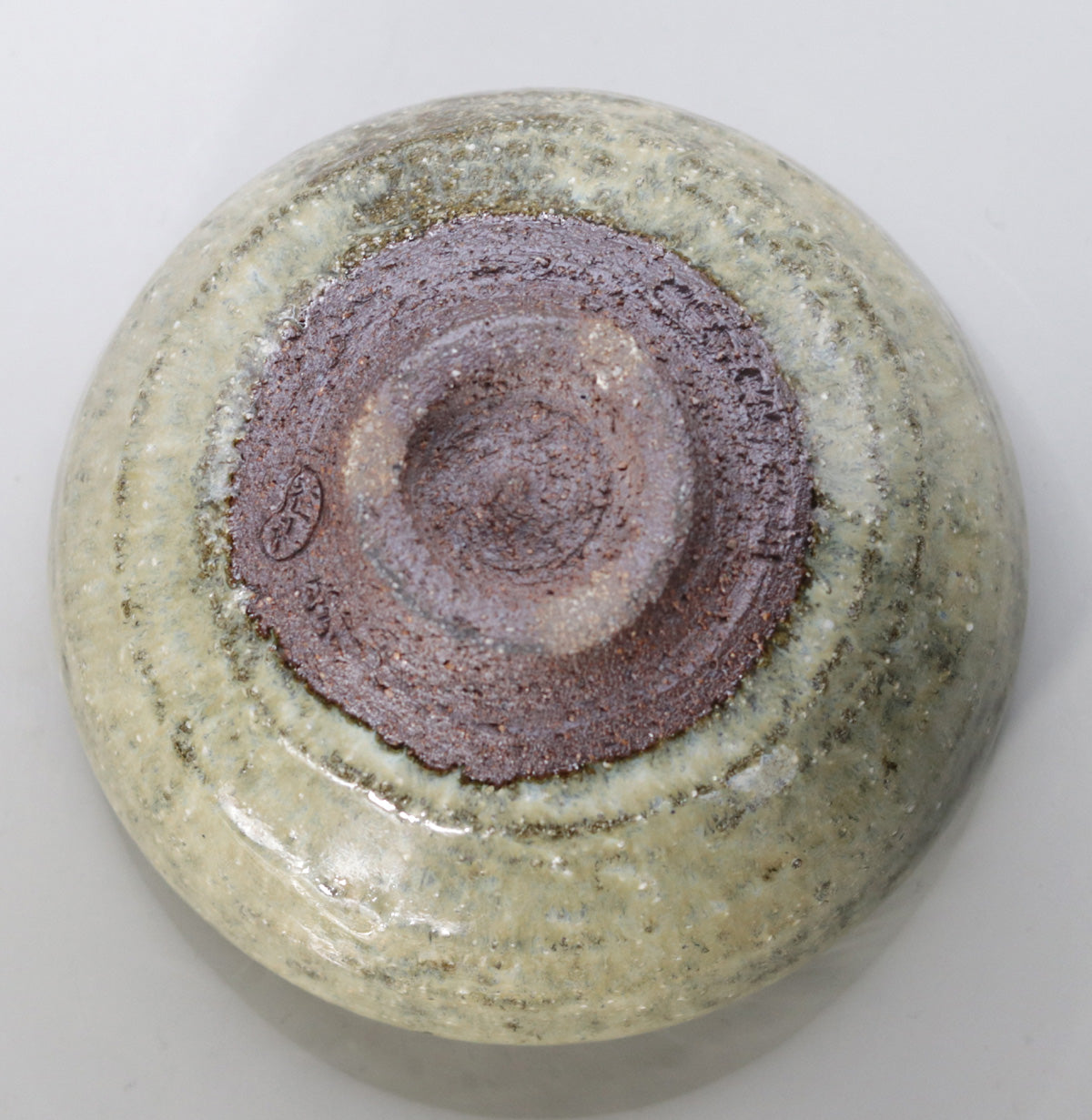
Multi-Column
-
[I will send it to you quickly and carefully]
We carefully package each product in a way that suits it best.
Also, delivery times vary depending on the piece (vessel, etc.).
Items that already come with a box will be shipped within 1-3 days of the order date.
For items that require a box to be made after your order, it will take approximately 30 days for production to be completed and then shipped.
In either case, once we have confirmed your order, we will contact you by email to inform you of the delivery date.
-
[Requests when purchasing pottery]
Even products that look the same may differ slightly in color, shape, size, etc.
The way the glaze is used, the power of the kiln, the firing method, the season, and the humidity also affect the appearance of the pottery.
Please understand the individuality of each piece of pottery and enjoy the unique warmth of handmade.

